ARTNOUVEAU2 - ENRICHING KNOWLEDGE ABOUT ART NOUVEAU ONLINE
09-11-2022
Within the ARTNOUVEAU2 project, we place emphasis on the promotion of cultural heritage through the joint action of all partners making posts on social media with the activity Enriching knowledge about Art Nouveau online.
Read what we have prepared during October on the common topic of Women of Art Nouveau:
WOMEN OF ART NOUVEAU IN SLOVAKIA:
An important place in the social life of the time was held by balls, where dance orders were an integral part of the world of women as part of the etiquette of the time. Ladies received them upon entering the ballroom. They determined the order and types of dances, and men entered their dance partners with their entries.

Photo credit:
Dance orders: Civic Ball, Vienna, 20.1.1910 and Ball of the Association of Grape Growers, Bratislava, 24.1.1912. Source: © Bratislava City Museum
WOMEN OF ART NOUVEAU IN HUNGARY:
Mariska Undi was a female artist at the turn of the century, one of the artistic geniuses of the Hungarian Art Nouveau, whose work reflects her love of beauty and respect for the formal language of nature.
She was a painter and craftswoman, born in Győr, Hungary, her family of six children moved to Budapest because of her burgeoning artistic talent. She got the possibility to study at the Royal Hungarian National School of Design. She became a pupil of Bertalan Székely, graduated as a drawing teacher, met with various artists whom has an impact on her, also determined his later career: she joined the team of Gödöllő Artists' Centre.
She took ethnographic collecting trips in the Sárköz and Kalotaszeg regions, and the Hungarian decorative motifs studied here regularly recur in his works. Around 1900, she made study trips to London, Paris, Munich and Switzerland. Also participated in the decoration of several buildings in the capital, such as the White Cross Children's Hospital and the People's Hotel (in our photo). Textile design played an important role in her art: she designed carpets, tapestries, embroideries and appliqués. His work in children's art is also outstanding, illustrating storybooks and textbooks, designing toys and children's furniture.
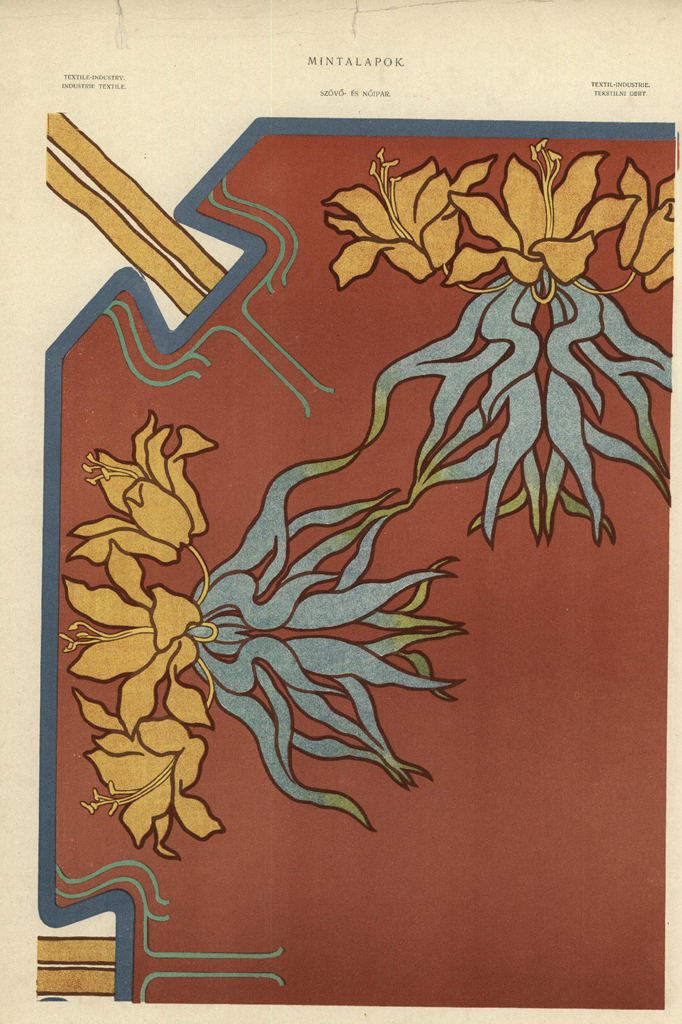

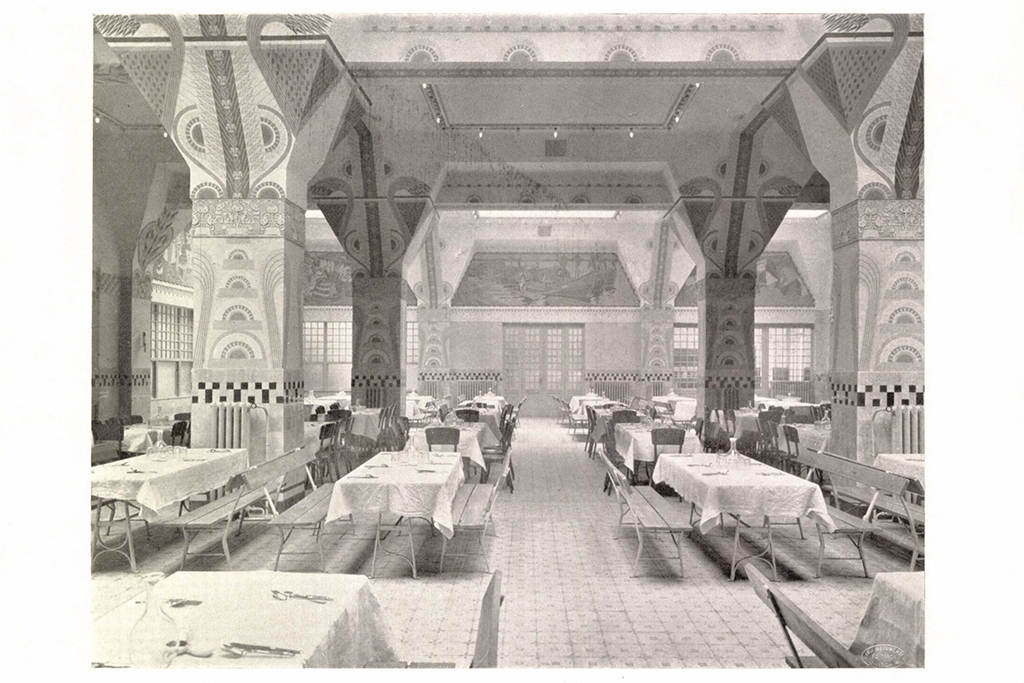
Photo credit:
Enterieur of the People’s Hotel, Budapest. @Hungarian Applied Arts Journal, 1912
Design of the tablecloth by Undi Mariska @IMM Collection
Mariska Undi, in a lace dress she made @Hungarian Applied Arts Journal, 1912
WOMEN OF ART NOUVEAU IN AUSTRIA:
An especially large number of women defined the work of the Wiener Werkstätte since the First World War – also because of the war. Attributes of the male world were adopted, and role models were turned on their head – a new, self-confident model of femininity was created. Practical work clothing replaced constricting women’s fashion, and “bobs” (short hairstyles) were the trend. As of the 1920s, women also took over the direction of workshops in the Wiener Werkstätte for the first time.
Vally Wieselthier was one of them. She headed the ceramics workshop and made an international name for herself as an artist and designer. Primarily known are her ceramic figures, which always represent a modern type of woman. Her ceramic heads, for example, show the “new woman” with conspicuously elongated, distorted proportions, stylized eyebrows, and prominent make-up. Also characteristic are seemingly spontaneously applied, colorful glazes and deliberately imperfect surfaces.
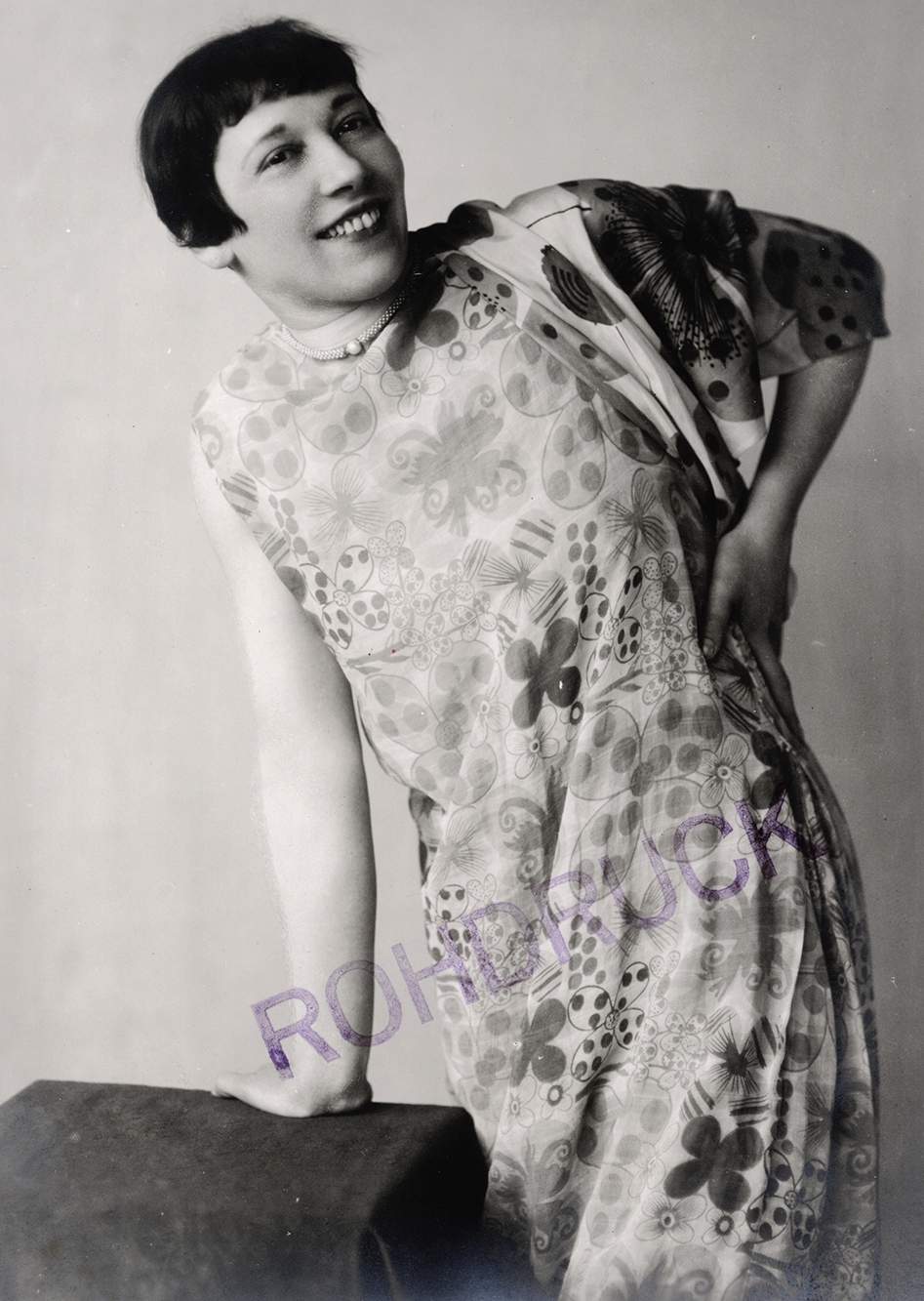
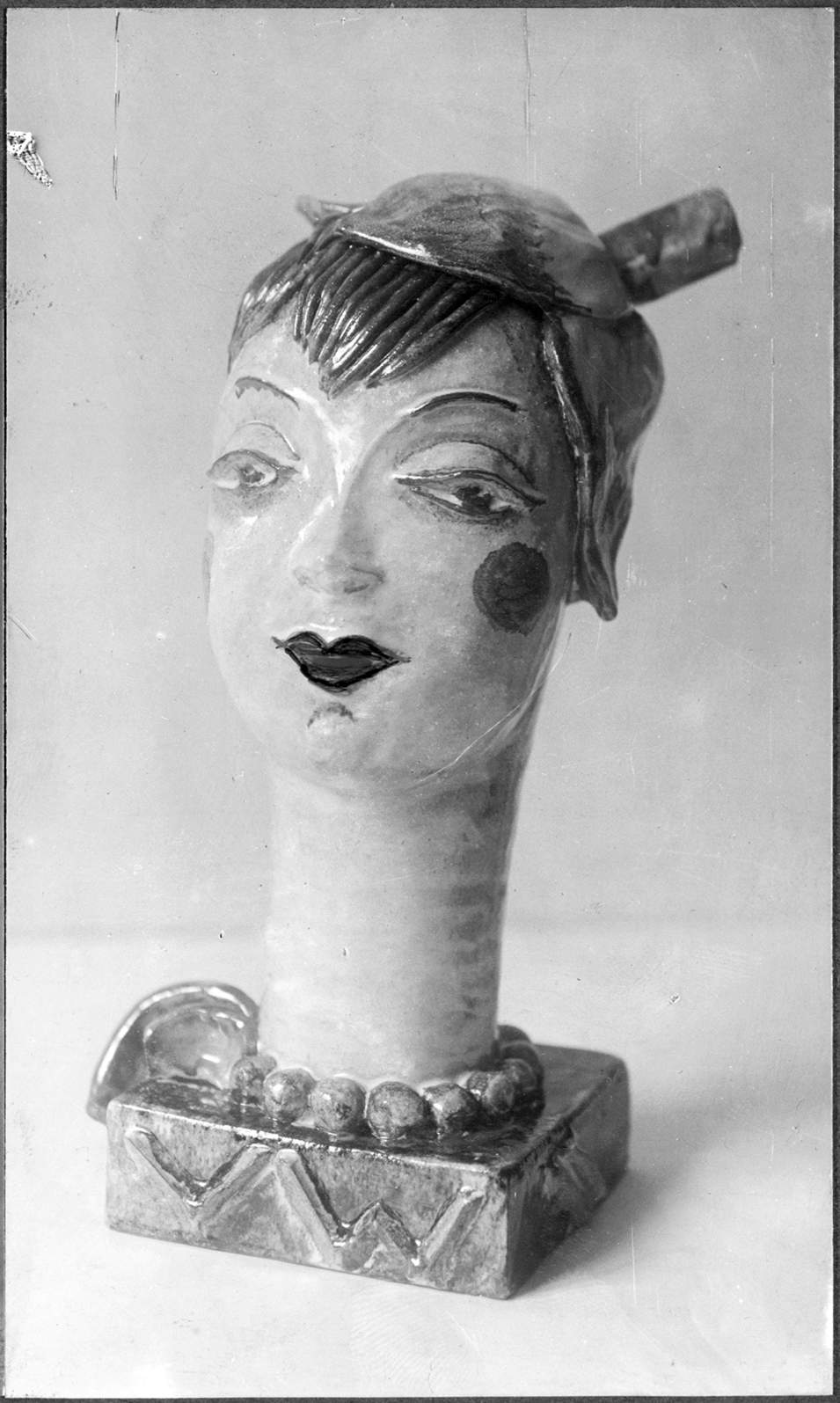

Photo credit:
Vally Wieselthier in a dress of the WW fabric Sommerfalter by Felice Rix, photograph, around 1925 © MAK
Head, design by Vally Wieselthier, 1928 © MAK
Figure Flora, design by Vally Wieselthier, 1928 © MAK/Georg Mayer
WOMEN OF ART NOUVEAU IN CROATIA:
Slava Raškaj (1877 — 1906), the Croatian painter, deaf and mute since birth, was educated in 1885–93. in the Institute for the Deaf in Vienna, where she received her first art lessons. Showing talent, after returning to Ozalj she continued to draw and paint. At the persuasion of I. Muha, she came to Zagreb in 1895, and through the mediation of Izidor Kršnjavi, she was taken care of at the Institute for Deaf and Mute Children until 1898. At the end of the 19th century, she attended a women's vocational school, where she completed a course in artistic and craft drawing. From 1896, she studied painting privately with Bela Čikoš Sesija. She painted in her studio at the Institute for Deaf and Mute Children, rarely outdoors, and after her return to Ozalj in 1899, mostly outdoors. Her exceptional oeuvre belongs to Croatian modern art, and partly to European art at the turn of the XIX century. in the 20th century, and it is characterized by its own lyrical expression, the spirit of Impressionism and Art Nouveau, peculiar plein-airism, intimate relationship with nature, modern understanding of landscape painting, poeticization of motifs, excellence of technique. She painted mostly small formats, most often in pure watercolor technique, sometimes with a touch of gouache, then in pastel technique, rarely in oil technique. The most common subjects of her works are native landscapes and still lifes, especially flowers and portraits.
She created the most notable part of her oeuvre at the very turn of the 20th century, painting with free strokes and airy colors to create an immediate experience of the motif, masterfully evoking light and atmosphere. She also created works in the field of applied art, mostly in the Art Nouveau style, characterized by decorativeness, linearity, stylized plant motifs and echoes of Japanese art.
For years, the Museum of Arts and Crafts fund has been decorated with a fan covered with large painted iris flowers painted by the artist Slava Raškaj in 1900, as well as a decorative tray on which a portrait of a girl in profile with a book, created in 1897, is painted with oil paints.
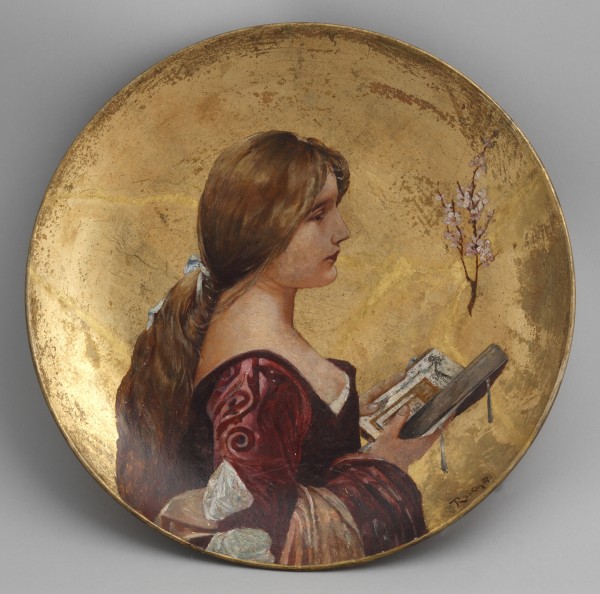
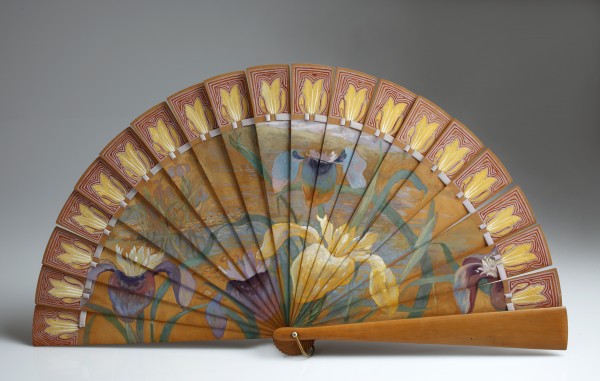
Photo credit:
Slava Raškaj, Decorative plate, P. J. Ullrich factory, Vienna (Zagreb), 1897. © MUO Zagreb
Slava Raškaj, Fan (brisé), Zagreb, 1900. © MUO Zagreb
WOMEN OF ART NOUVEAU IN ROMANIA:
Nadia Grossman Bulughin
There are not so many female artists who were drawing book illustrations in current Romania during the “Golden Age” of the Art Nouveau graphics. Fewer still gave artwork which travelled throughout the country and around the world borne on the pages of books such as those penned by Romania’s Queen Mary 1st or by historian and political figure Nicolae Iorga. Three capital letters tick such boxes – NGB – representing the initials of the many names of the same exciting and inspiring artist: Nadia Grossman-Bulughin, Nadia Grosman-Bulighin, Nadia Grossmann Bulyghin, Nadia Bulighin, Nadia Bulighin-Grossmann, Natasha Bulygjin, Nadia Buligin sau Nadia Boulouguine, depending on the time and country of circulation / translation. A fascinating and little known female character, probably the first woman to attain a professional career in book illustration in Romania in a time when ladies` painting was considered leisure activity, for the enjoyment of family or friends, and not at all a profession.

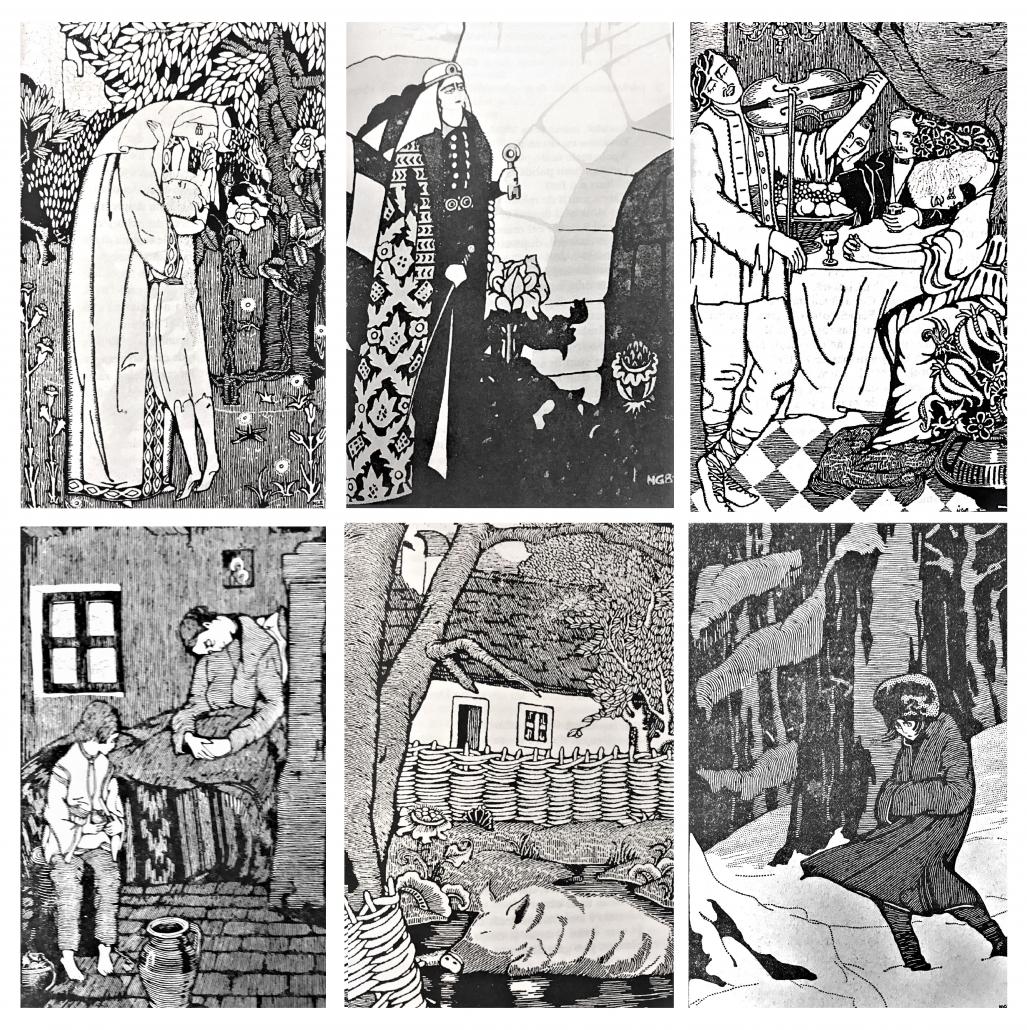
Photo credit:
Covers illustrated by Nadia Grossman Bulighin between 1921-1922
Six illustrations by NGB for Mary Queen of Romania, Stories, edited by Prince Charles Foundation / Fundația Principele Carol, București, 1921
Lead partner: City of Oradea (Oradea Municipality)
Other partners: Oradea Heritage and Foundation for Protection of Historical Monuments from Bihor County; National Institute of Heritage, Bucharest; Iparművészeti Múzeum, Budapest; Museum of Arts and Crafts, Zagreb; Museum of Applied Arts, Vienna; Slovak University of Technology, Bratislava; Republic Institute for Protection of Cultural Monuments, Belgrade; Kodolányi János University, Budapest.
#artnouveau2
Project co-funded by European Union funds (ERDF, IPA II).
